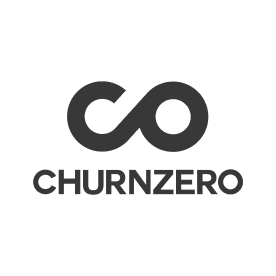
Best Customer Success Software for SMBs vs. Enterprise
The right customer success software depends on your team size. A small customer success team just starting out has different needs (and budget!) than an enterprise company. As a general rule, customer success platforms are not cheap, but we have some tips on how to negotiate a competitive price.
Let's take a look at the best customer success software in 2024 for both SMB and enterprise, so you can make an informed choice.
Best CSM software for enterprise
Best CSM software for SMB
Best all-in-one customer success platforms
We rated these platforms as best for a particular team size by looking at customer reviews & claims from G2, Reddit, and each CSM software’s website. Check out the comparison table for more details.

ChurnZero
Why it's best for enterprise - ChunZero is one of the most popular CSM platforms due to its comprehensive feature set. It's a powerful platform with customizable dashboards and integrations with top tools like Front and Intercom. That power comes at a price, however — setup requires significant work & technical expertise.


Catalyst
Why it's best for enterprise - For a less mature product than the incumbents, it still provides an impressive range of automation features and integrations at a competitive price point. Cons include limited reporting features and imperfect data input via the Salesforce integration.

Gainsight
Why it's best for enterprise - Like ChurnZero, it's a comprehensive tool that includes customer health score tracking and robust reporting and analytics. However, the most common complaint is that it's difficult to set up and maintain (as in, you'll need an ops role dedicated primarily to keeping Gainsight running).


Custify
Why it's best for enterprise - It's a good middle ground in terms of price, features, and ease of use. Offers health scores, dashboards, and automation playbooks, plus it works well with Salesforce. Some users say that data export is limited and there aren’t enough integrations with billing tools and CRMs.

Vitally
Why it's best for SMB - A user-friendly tool with health tracking, task management, and plenty of integrations (Salesforce, Stripe, Mixpanel, etc.) Users say it’s easy to set up when compared to other tools, but downsides include limited reporting and dashboard features.

ClientSuccess
Why it's best for SMB - It's a user-friendly platform with strong data analytics and customizable dashboards, but has limited integrations with marketing automation tools and lacks built-in NPS surveys.

Planhat
Why it's best for SMB - It's popular thanks to its robust and mature feature set, including customer segmentation, automation tools, and various integrations. It's one of the more expensive options, but users rave about Planhat's onboarding, saying they really know customer success.

CSM Platform Comparison
Want to compare customer success software tools side by side? Use this table to compare the ease of setup, price, and key features of the best customer success platforms.

How to shop for customer success software
Unfortunately, CSP pricing is far from straightforward, so you should arm yourself with information before heading into the purchasing process.
Start by doing a needs assessment (e.g. MoSCoW) with your team to get clear on which features are must-have, should-have, or could-have — putting you in a better position to negotiate pricing with software vendors. You may also need to budget for a team member to set up and support the CSP on an ongoing basis.
Now that you have a game plan, how do you get a fair price?
- Don't pay for features or license flexibility you don’t need — that’s why completing a needs assessment ahead of time is so important.
- Reach out to at least 3 vendors to get pricing quotes, and try not to get your heart set on any one of them in particular. Remember, there's a ton of overlap in most CSP's feature sets!
- Once you’ve secured quotes, ask vendors if they can match or beat the price you have in hand. Timing this conversation for the end of the fiscal year may improve your chances.
Keep in mind that pricing can vary based on the length of the contract term, the size of your company, and how many users you have. Most CSPs do not charge a straight per-user per-month fee, but instead have a combination of full seat licenses, lite seat licenses, account fees, and platform fees.
Is CSM the same as CRM?
Customer success software and CRM software both deal with customer data and interactions, but they have different focuses and goals. Here's the simplest way to explain the difference: Customer success software comes into play after the sale is made. CRM software is used before and during the sale.
Or put another way: Customer success software is focused on ensuring customer satisfaction and retention, while CRM software is focused on sales and revenue growth.
Does your team really need a CSP?
Plenty of businesses prefer to use tools that aren't considered customer success platforms; for example, Intercom and Slack Connect (messaging platforms) and Notion (knowledge base software).


If you’re not ready to spend the money or don’t have the technical resources to set up a CSP, you can pull together a decent solution from other tools. If that sounds like your team, check out our list of free customer success tools →
A word of caution: If your solution doesn't include automation, CSMs will struggle to keep up with the volume of tasks and communications required to manage customer relationships at scale. You may want to think about other ways you can automate common workflows and customer communication, so CSMs are freed up for more high-level work.
If your customer work is scattered across lots of cloud apps, Workona can help. In Workona, workspaces unify scattered customer work, bringing together all the apps & resources your team needs to run your entire customer process. Learn how your success team can eliminate tedious tasks — hunting down links, creating folders, organizing it all manually — with Workona.